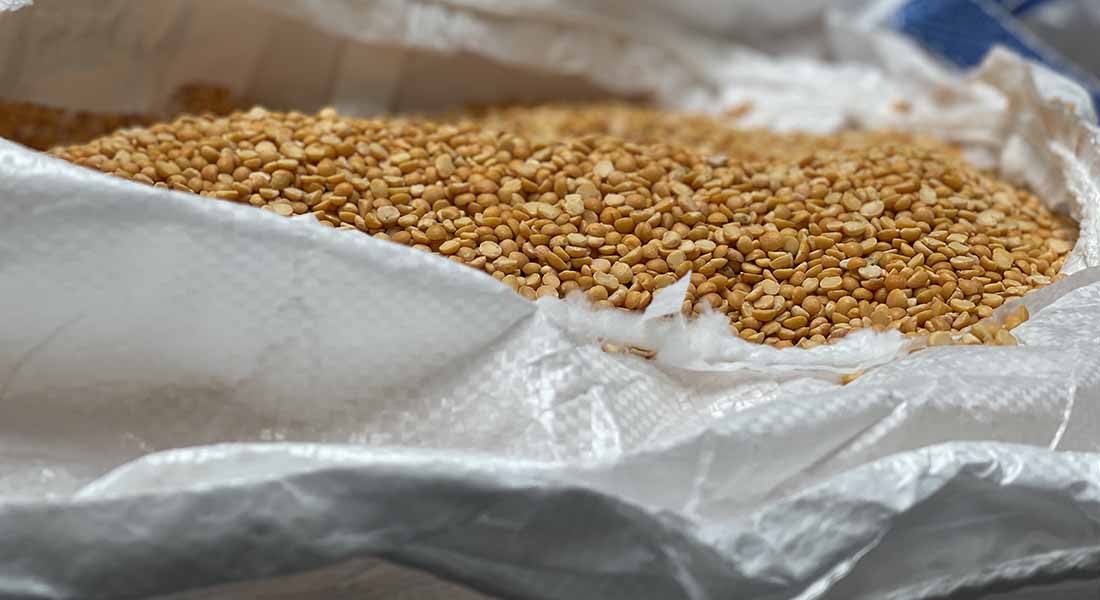New research project will examine plants’ own method of releasing seed proteins
Researchers from the University of Copenhagen will investigate what plants do when they have to mobilise and use their seed proteins to germinate. If successful, they will potentially be able to discover a more sustainable method of extracting food proteins from plants using enzymes.

Seed proteins from peas, beans and lentils are good alternatives to meat, as they contain up to 40% protein. This is one of the reasons why Poul Erik Jensen, professor at the Department of Food Science at the University of Copenhagen (UCPH FOOD), sees great potential in determining how best to use enzymes to extract proteins from seeds. The researchers are using pea seeds as a prototype.
“I see a lot of potential for us to be able to use enzymes to extract seed proteins from plants, and scale it up so that it can replace the less sustainable methods that are used today. At the same time, we will hopefully be able to increase the digestibility of the plant proteins and thereby create a method that can be implemented in a sustainable food production that is also healthier,” says Poul Erik Jensen.
Today, proteins are often extracted from plants by “wet” processing, using water and chemistry.
“First you use a chemical solution in water that has a high pH value to extract the proteins, then you collect them in solution that has a low pH value, after which the material must be dried. It is a heavy processing method because it requires water, time, and a lot of energy,” explains Poul Erik Jensen.
You can also choose a mechanical processing method, where you turn the dried peas into flour.
“But the proteins are partially destroyed/modified by both the mechanical and wet processing methods, in the sense that they open up in different ways, which can affect the functionality both negatively and positively. This impacts how sustainable the processing is as well the nutrition we get from the proteins,” says Poul Erik Jensen.
How does the plant mobilise and use its own proteins?

In the project, the researchers ask a key question:
“If the pea seed were to germinate, what would it do to mobilise the seed proteins? We would really like an answer to that,” says Poul Erik Jensen.
The hypothesis is that plants, including the pea seeds, are predisposed to extract the best possible nutrition from the proteins using their own natural method. This is basically what we want when we use the proteins for food – both for climate and health reasons.
“If we know whether there is a certain combination of enzymes that help soften the seed and release the proteins, we can potentially use these enzymes for a gentler extraction method than the methods used today,” explains Poul Erik Jensen.
Problem: We need to use less water
The idea is not new, because a similar method has been used in the bioethanol industry, where straw has been broken down and the cellulose has been used as a substrate for cellulose-degrading enzymes.
“This method is behind the entire bioethanol thinking that has been very popular all over the world. Enzymes are used to cut the cellulose strands and turn them into sugar molecules, which are transformed into bioethanol using yeast, which can then be used for fuel. And it is this line of thinking that we will try to apply to seed proteins,” says Poul Erik Jensen.
But if we are able to use it in a sustainable food production in the future, we need to use much less water in the process, he points out.
“Traditionally, the process would require quite a lot of water, but we want to execute the enzyme treatment with as little water as possible and make the seeds semi-liquid, porridge like. And if the enzymes are to work in the porridge, we have to move the material, so part of the project is to learn something about enzyme treatment in flow,” explains Poul Erik Jensen.
Therefore, we cannot live by eating untreated plants
For many years there has been a rather negative perception of “processing” food. And that might be fair enough in some contexts. But Poul Erik Jensen points out that there is also a lot of processing that results in the plant nutrients being made available to us.
“For example, if we eat plants raw, there will be some proteins that are not readily available to us because they are trapped in intact cells surrounded by a cell wall. Here, the proteins are not soluble, so we cannot get the nutritional benefit from them that we could have if they had been processed,” says Poul Erik Jensen and continues:
“In the western world, where people typically get more than enough calories and proteins, this might work well, but it is not good nutrition for children or people who have to make do with less food. That’s why we cannot base our entire diet on plants that are not processed.”
Related News
Contact
Professor at the Department of Food Science (UCPH FOOD) Poul Erik Jensen, peje@food.ku.dk
Or
Communications officer at UCPH FOOD Lene Hundborg Koss, lene.h.koss@food.ku.dk
Facts
The research project Realizing the plant protein future: gentle seed deconstruction (Seedstruction) has received a grant of DKK 2,879,270 from the Independent Research Fund (DFF).
